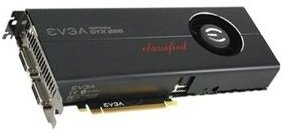Should I Upgrade My Computer's Video Card?
Upgrading your Video Card
Before computers were as granular as they are today, graphics cards were hard-wired into home computers making them impossible to upgrade. Today, upgrading a graphics card is as simple as removing the old one and plugging in the new one. A quick visit to the manufacturer’s website for the latest video card drivers and you are off and running.
Next only to memory and hard drives, the video card is the most popular hardware upgrade for desktop computers. Hard-core gamers are likely to upgrade a computer’s video card several times throughout a computer’s life and graphics artists are always looking to squeeze more power out of their computer’s graphics ability.
Still, with so many new graphics cards being released by the video card manufacturers, it is difficult to keep up with the changing computer graphics market. Before you upgrade your desktop computer’s video card, consider the following three questions.
1 – What is My Graphics Card Not Doing Now That a New One Would?
This one is a utilitarian question that asks you to consider the actual and perceptible differences in graphics you will experience by abandoning your old video card for a newer model. If you are experiencing jerky video while watching a high definition movie or if your frame rate often dips below the 30 frames-per-second threshold, you can be more certain that a video card upgrade will be a wise investment.
For now, forget about the numbers and take an honest look at what your computer’s graphics are doing or not doing for you. Many computer owners get caught up in the hype generated by the video card manufacturer’s who promise this or that many polygons per second or this and that amount of video memory. If your video card is doing what you need it to do, then upgrading is unlikely to give you more of what you already have.
2 – Does My Video Card Really Need Upgrading?
Take stock of what video card you have and then look at what is available in the market. If you are running an AGP video card in your computer, then it is likely time to upgrade. However, this may prove difficult and expensive because you will also need to upgrade your motherboard so your computer can support the newest PCIe graphics card standard.
Many websites discuss the relative advantages of upgrading from one video card to another. For example, Tom’s Hardware publishes useful information on the power and processing ability of a variety of graphics cards from the top manufacturers. The top two video card manufacturers are nVidia and ATI, both of whom at any given time will boast about having the most powerful card on the market.
Although not always accurate, using the three-year rule is often a good idea. The three-year rule states that a computer becomes more expensive to keep and maintain than the alternative of buying a new one. This rule of thumb has been touted by such giants as Intel and Microsoft and is a computer hardware industry heuristic for determining whether computers should be fixed or replaced as they begin to fail.
If your video card is under three years old, you have a good excuse for upgrading. However, if your video card is more than three years old, you need to step back and see the big picture. Perhaps your entire computer, not just the video card should be replaced. This brings us to our final question.
3 – Should I Really Upgrade My Computer Rather than the Video Card?
Many home computer users blame a computer’s video card for slow performance. They erroneously assume that if things are taking a long time to appear on screen, it is because the graphics card is not keeping up. Usually, the slow performance is due to either an aging computer or the owner’s failure to engage in basic maintenance behaviors.
Let’s assume that you have done some basic maintenance on your computer such as defragging the hard drive, checking the hard drive(s) for errors, and unloading unneeded and unused software. Slow performance could be the computer’s fault as a whole and not just the fault of the video card. Aging processors, slow RAM, and even a nearly full hard drive can make a computer appear slower than it once was.
Computer prices have dropped in the last decade so that buying a reasonably powerful computer costs hundreds not thousands of dollars. Even computers in the US$700 to US$999 range offer enough power for mid-range gaming and other video-intensive computing.
Look carefully at your computer as a whole and ask yourself whether the video card is to blame for sluggish performance. You may be surprised to realize that your computer is due for replacement rather than just the graphics card.
Conclusion

Before you upgrade your video card, consider the three questions discussed above. One of the difficulties in deciding whether to upgrade a graphics card arises from determining exactly what you need a graphics card to do that your current card is not doing.
Often, home users get caught up in the numbers offered by the graphics cards manufacturers. Remember, that those manufacturers have an incentive to make you feel that your video card is inadequate for your needs. Remember, also, that they are trying to sell you something and want to make an upgrade sound as enticing as possible.
Some home users erroneously blame a video card for slow or disappointing computer performance. Truthfully, it may be a lack of maintenance or the computer as whole that is to blame. Before upgrading your video card, ask yourself the three questions above. You may just save yourself some money and disappointment from a new video card that doesn’t deliver as promised.
